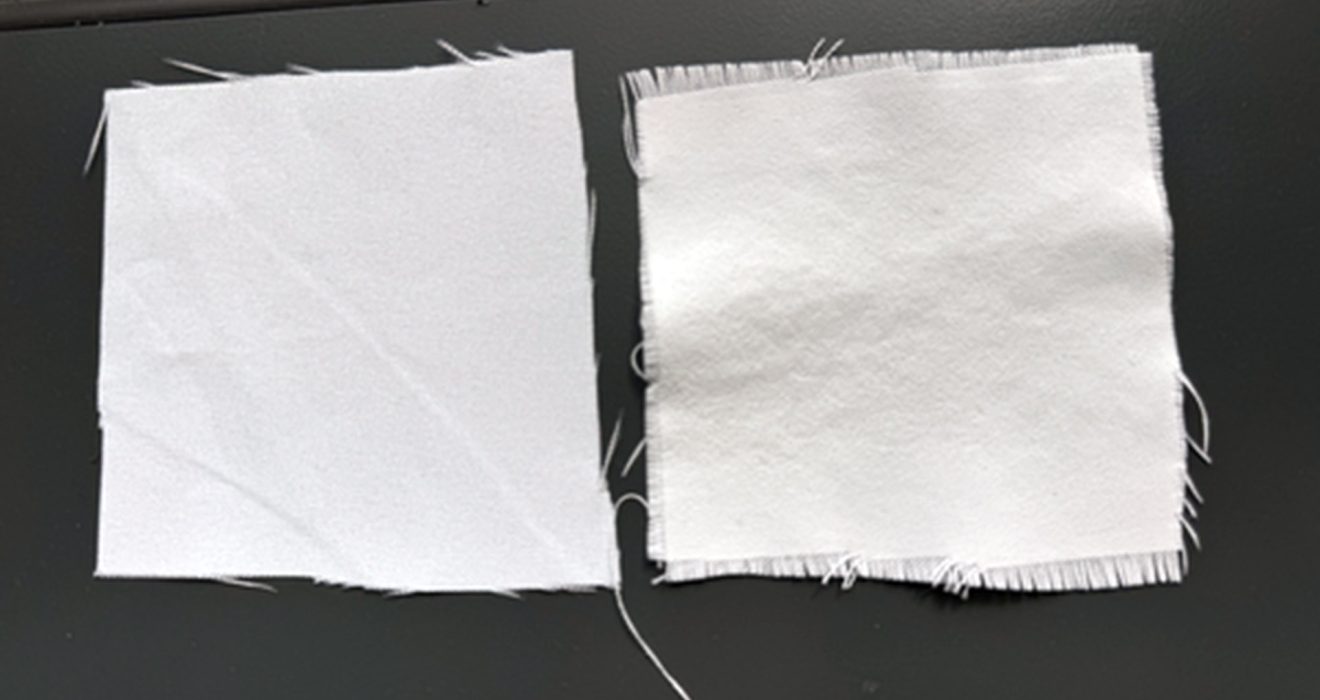As urban temperatures continue high throughout the fall, the need for novel heat-reduction technologies grows. Because of the urban heat island effect, cities frequently have higher temperatures than rural settings, thus researchers are looking at new techniques to keep people cool while they are outside. One interesting solution uses chalk-coated textiles, which have the potential to transform outdoor apparel while also providing free cooling. Recent studies published in ACS Applied Materials & Interfaces emphasize a treated polyester fabric’s great ability to produce noticeable cooling effects.
Breakthrough in Cooling Textiles
Evan D. Patamia, Megan K. Yee, and Trisha L. Andrew of the University of Massachusetts Amherst have created a polymer-mineral coating that dramatically improves commercial fabrics’ cooling qualities. The researchers first presented their findings at the American Chemical Society’s Fall 2024 meeting, demonstrating a treated polyester poplin fabric that could reduce the wearer’s temperature by up to 15°F when compared to untreated materials. These findings suggest a new method for passive cooling in metropolitan areas.
How Cooling Fabric Works
The cooling fabric has a chalk-based covering composed of polymer and calcium carbonate. This coating works by reflecting sunlight and encouraging heat dissipation via thermal radiation, which reduces the fabric’s ability to absorb and retain heat. Unlike traditional cooling methods that rely on power, such as air conditioning or wearable cooling devices, this revolutionary material offers an energy-free option that is lightweight and simple to incorporate into everyday clothes.
Testing in Real-world Urban Environments
To evaluate the efficiency of the chalk-coated textiles, the researchers undertook extensive outdoor testing in urban settings. These tests included four different settings to evaluate the fabric’s performance under diverse situations of heat absorption and emission:
Open Grass Field: The treated cloth kept the average air temperature 6°F lower than the surrounding ambient air. This study demonstrates the fabric’s capacity to effectively reflect solar radiation in open situations.
Concrete-paved Alley Between Buildings: Even in confined urban settings prone to trapping heat, the cloth managed to chill the air beneath by an average of 3°F below ambient temperatures.
Asphalt-paved Parking Lot: Asphalt, known for its tremendous heat absorption, creates a tough atmosphere. Nonetheless, the treated cloth achieved a 1°F drop in air temperature, proving its durability in harsh heat-retaining environments.
Open Concrete Veranda: The fabric produced a cooling effect of 3°F below the ambient air temperature, demonstrating its constant performance on hard, heat-emitting surfaces.
Comparing Untreated and Treated Fabrics
The difference between untreated polyester and the chalk-coated variety was obvious. Untreated fabrics, which often absorb heat, aggravate pain in hot weather. In contrast, the treated polyester not only cooled the air beneath it but also lowered the heat felt by wearers by up to 15°F, making it a game-changing solution for outdoor apparel in hot climates.
Implications for Urban dwellers
This new textile technique has the potential to greatly assist urban dwellers, pedestrians, and bicycles. As cities battle with rising temperatures exacerbated by climate change and congested infrastructure, the demand for sustainable, energy-efficient cooling solutions grows. Chalk-coated fabrics could be an economical and scalable alternative for improving personal comfort while lowering dependency on energy-intensive cooling techniques.
Energy-Free Cooling for a Sustainable Future
One of the most fascinating elements of this breakthrough is its longevity. The fabric uses a basic polymer-mineral coating to reduce the demand for air conditioning and other cooling technologies, which contribute to greenhouse gas emissions. This is consistent with broader goals of increasing energy efficiency and lowering the environmental impact of urban living.
Future Applications and Potentials
Chalk-coated textiles are useful for more than just clothes. Potential applications include:
- Outdoor Gear and Accessories: Hats, scarves, and gloves produced from treated textiles may improve comfort during outdoor activities.
- Urban Infrastructure: Awnings, umbrellas, and other outdoor structures might all benefit from the same coating to keep public spaces cool.
- Emergency and Disaster Relief: Cooling textiles may be especially useful in disaster-affected places where electricity and air conditioning are lacking.
- Healthcare Settings: Lightweight cooling materials may also be beneficial for heat-sensitive people or those in medical care who need temperature control.
Challenges and Future Research
While the results are encouraging, difficulties persist. The coating’s endurance during frequent washing and long-term exposure to outside conditions needs further testing. Furthermore, scalability and cost-effectiveness for scale production must be addressed to achieve broad acceptance. The researchers also intend to investigate how various fabric types and coatings might be tailored for different uses and climates.
Conclusion
Chalk-coated textiles are a novel approach to tackling urban heat issues. This unique fabric provides energy-free cooling in a variety of conditions, making it a practical and sustainable solution for both individuals and communities. As research continues, the ability to incorporate these fabrics into ordinary clothes and urban infrastructure may transform how we stay cool in increasingly hot places. This initiative, supported by the University of Massachusetts Amherst’s Interdisciplinary Research Grant, lays the way for a cooler, more sustainable future.

